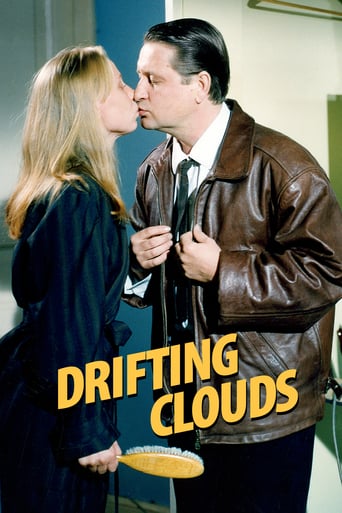

"Life is short and miserable. Be merry while you can."I hope that every sad loser in life and every person who is kind but is faced with tremendous misfortune has a happy ending.This film is dedicated to Aki Kaurismäki's most prominent collaborator and friend, Matti Pellonpää, who was supposed to reprise his role in Shadows in Paradise in this film, which was meant to be the sequel.He died of a heart attack and was only 44. Maybe, after all, Aki Kaurismäki's cinematic lens pale in comparison to real life's tragedy.
... View MoreMany countries went on with "restructuring" their economies during the 1990s, and Finland seems to have been no exception. This film deals with the human side of the restructuring, namely unemployment. Aki Kaurismaki is undoubtedly a talented filmmaker, but sometimes his films are done in with his mannerisms and his particular obsessions (Finnish tango, classic rock, smoking, old automobiles, working class culture, cinephilia of the 60s variety). In Drifting Clouds, though, he made as perfect a film as he could possibly have. The story is about a working class couple, Lauri and Ilona (Kari Vaananen and Kaurismaki regular Kati Outinen, who is wonderful here). They work as a streetcar driver and a restaurant headwaiter respectively. They seem a happy, if impassive couple, though they barely made ends meet with their jobs. Both find themselves suddenly unemployed, and most of the movie is about trying to find themselves employed again. The situations they went through are often comical, and some people might be bothered with making fun of the very real drama of unemployment (when I saw this film in a movie theater, some people reacted tensely at much of the humor and gags). But I think Kaurismaki's is clearly not poking fun at the two main characters (who are both very noble people) but at the absurdity of the economic system. There's a happy ending that seems slightly incongruent with what we've seen before, but this is overall a wonderful film. The film is dedicated to Matti Pellonpaa, a regular of the first films of Aki Kaurismaki, who died during preproduction of this movie. His photo is shown as the childhood photograph of Ilona and Lauri's deceased son.
... View MoreThe movie has a feeling of sinking ship. Yes, you heard right. The setbacks which haunts the maincharacters are so cruel that only real life can do something like this to people. I happen to live quite close to places where this has made, and friend of mine wondered how Kaurismaki had found such a ruined places from Helsinki! This looks like some dirty streets in NY! The actors and actresses are magnificent. And the music has it's melancholic feeling of autumn as ever. Yes, definably this is something you should see.
... View MoreThe British film-maker Ken Loach manages to produce profound and uplifting films on the rather grim subject of poor people trying to cope with the nightmare that is modern urban capitalism ('My Name is Joe', 'Ladybird, Ladybird', 'Carla's Song'). Yet 'Drifting Clouds', which offers a Finnish version of the same old themes (poverty, unemployment, mindless sex, optimism in the face of repeated failure), makes me realise how truly boring an evening in a dark room in front of a flickering screen can be. This movie is dull, and two years later I have still not fully forgiven the person who persuaded me to go and see it. As I am married to her, this lack of forgiveness creates considerable problems every time she tries to take me to the movies. It's about a couple who both lose their jobs. That's more or less it, apart from the 'happy' ending. View at your peril.
... View More